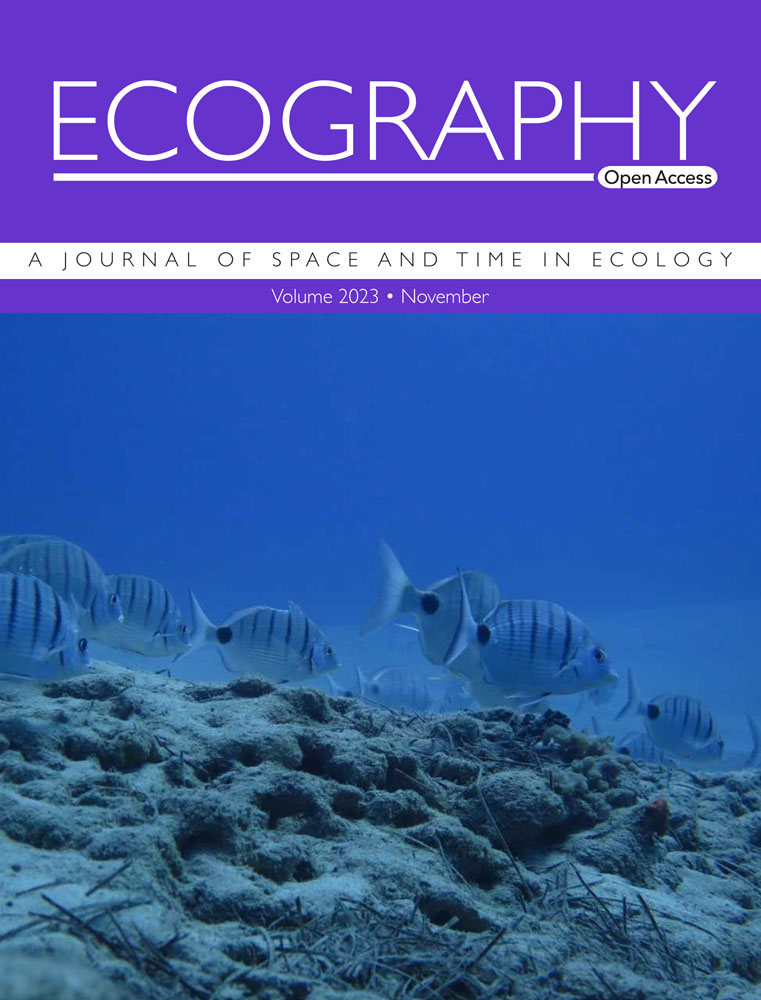Non‐stationary forest responses to hotter droughts: a temporal perspective considering the role of past legacies
IF 5.4
1区 环境科学与生态学
Q1 BIODIVERSITY CONSERVATION
引用次数: 0
Abstract
Global change is altering forests worldwide, with multiple consequences for ecosystem functioning. Temporal changes in climate, and extreme, compounded weather events like hotter droughts are affecting the demography, composition and function of forests, leading to a highly uncertain future. To accurately predict future forest responses to hotter droughts, we highlight the need for considering a broad temporal perspective. So far, most ecological studies do not integrate different timespans and temporal resolutions, making it difficult to assess two critical time‐related aspects of forest responses to hotter droughts: the legacies of past disturbances (i.e. the effect of past events on current responses) and their role in non‐stationary responses (i.e. changing effects over time). To incorporate the effect of past hotter droughts on today's forest distribution, structure, composition and function, we identify and define key forcings and forest responses operating across three key timescales, ranging from hours to millennia. First, the shortest timescale considered (i.e. from hours to a decade) usually addresses physiological processes as well as individual tree and population performance. Second, the intermediate timescale (i.e. from decades to centuries) encompasses changes in community composition, stand structure and forest dynamics. Last, the longest timescale (i.e. from centuries to millennia) is crucial for understanding biogeographical processes that shape current species and trait pools. Then, we assess how the contrasting timespans and temporal resolutions used by different ecological subfields and approaches provide critical insights into characterising and understanding the influence of past events on ongoing responses to hotter droughts. We conclude that the holistic view gained from integrating disciplines with complementary temporal perspectives will result in a more comprehensive understanding of forest functioning and we provide a roadmap for achieving this, thereby improving our ability to predict forest responses to climate change.非平稳森林对高温干旱的响应:考虑过去遗产作用的时间视角
全球变化正在改变世界各地的森林,给生态系统功能带来多重后果。气候的时间变化和极端、复杂的天气事件,如更热的干旱,正在影响森林的人口、组成和功能,导致高度不确定的未来。为了准确预测未来森林对高温干旱的反应,我们强调需要考虑广泛的时间视角。到目前为止,大多数生态学研究没有整合不同的时间跨度和时间分辨率,这使得很难评估森林对更热干旱响应的两个关键时间相关方面:过去干扰的遗产(即过去事件对当前响应的影响)及其在非平稳响应中的作用(即随时间变化的影响)。为了综合考虑过去高温干旱对当今森林分布、结构、组成和功能的影响,我们确定并定义了在三个关键时间尺度(从小时到千年)上运行的关键强迫和森林响应。首先,考虑的最短时间尺度(即从几小时到十年)通常涉及生理过程以及单个树和种群的表现。第二,中间时间尺度(从几十年到几百年)包括群落组成、林分结构和森林动态的变化。最后,最长的时间尺度(从几个世纪到几千年)对于理解形成当前物种和性状库的生物地理过程至关重要。然后,我们评估了不同生态子领域和方法使用的对比时间跨度和时间分辨率如何为描述和理解过去事件对持续响应更热干旱的影响提供关键见解。我们的结论是,从整合学科和互补的时间观点中获得的整体观点将导致对森林功能的更全面理解,我们为实现这一目标提供了路线图,从而提高我们预测森林对气候变化的反应的能力。
本文章由计算机程序翻译,如有差异,请以英文原文为准。
求助全文
约1分钟内获得全文
求助全文
来源期刊

Ecography
环境科学-生态学
CiteScore
11.60
自引率
3.40%
发文量
122
审稿时长
8-16 weeks
期刊介绍:
ECOGRAPHY publishes exciting, novel, and important articles that significantly advance understanding of ecological or biodiversity patterns in space or time. Papers focusing on conservation or restoration are welcomed, provided they are anchored in ecological theory and convey a general message that goes beyond a single case study. We encourage papers that seek advancing the field through the development and testing of theory or methodology, or by proposing new tools for analysis or interpretation of ecological phenomena. Manuscripts are expected to address general principles in ecology, though they may do so using a specific model system if they adequately frame the problem relative to a generalized ecological question or problem.
Purely descriptive papers are considered only if breaking new ground and/or describing patterns seldom explored. Studies focused on a single species or single location are generally discouraged unless they make a significant contribution to advancing general theory or understanding of biodiversity patterns and processes. Manuscripts merely confirming or marginally extending results of previous work are unlikely to be considered in Ecography.
Papers are judged by virtue of their originality, appeal to general interest, and their contribution to new developments in studies of spatial and temporal ecological patterns. There are no biases with regard to taxon, biome, or biogeographical area.
 求助内容:
求助内容: 应助结果提醒方式:
应助结果提醒方式:


